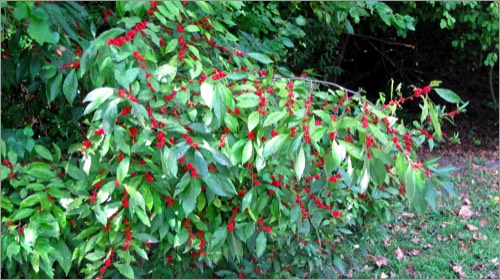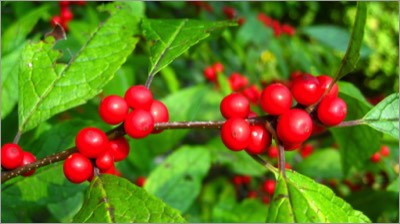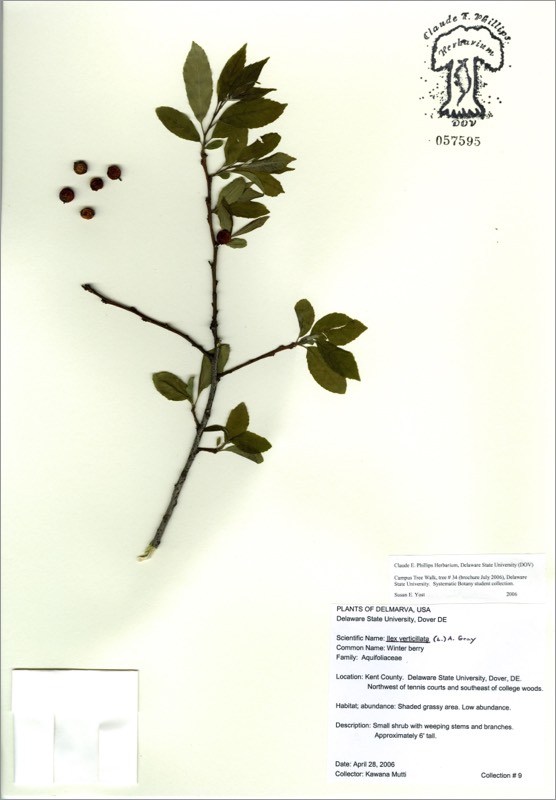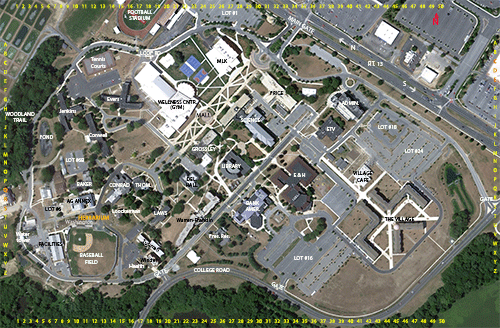Winterberry, Winterberry holly


Ilex verticillata
WINTERBERRY
Aquifoliaceae
E. North America
location: map coordinates J-3 (on Loop Road, just south of Woodland Trail entrance), N 39°11'14'' W 75°32'48''
Planting history: probably planted with new Loop Road ca 2000. Source probably (Terrain at) Styers (nursery), PA.
Descriptions:
Native species, State Rank S5 (very common in Delaware)
WINTERBERRY
Aquifoliaceae
E. North America
location: map coordinates J-3 (on Loop Road, just south of Woodland Trail entrance), N 39°11'14'' W 75°32'48''
Planting history: probably planted with new Loop Road ca 2000. Source probably (Terrain at) Styers (nursery), PA.
Descriptions:
- deciduous shrub (or small tree)
- etymology: Ilex from the Latin name for holm oak/holly oak (Quercus ilex); verticillata = whorled (for the clusters of axillary flowers/fruits)
- also called winterberry holly (in holly genus Ilex)
- leaves deciduous (shed in winter), alternate, serrate
- polygamo-dioecious (separate male and female trees, with some perfect flowers); flowers small, whitish
- fruits bright red, persist in winter, very attractive; eaten by many birds
- native habitat is moist soils, swamps
Native species, State Rank S5 (very common in Delaware)


HIT REFRESH TO START LOCATION GRAPHIC